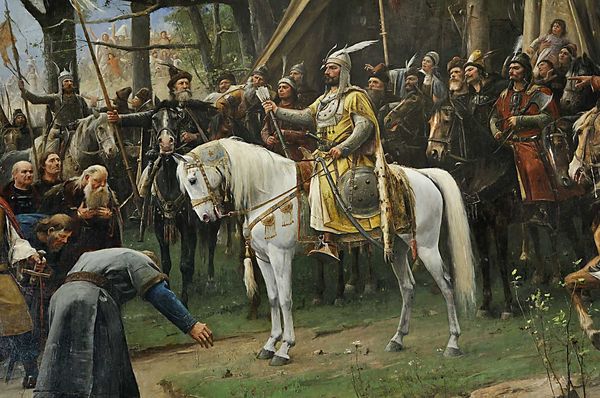As is known, the medieval kingdom of Hungary included, in addition to Hungary, the territories of all of modern Slovakia and part of Romania.436-7
The data given here about Kuns concern only the territory of modern Hungary, without taking into account the Hungarians of Romania, Serbia and Slovakia, which may also include Kuns (we will talk about them below).

And in Hungary proper there are two historical areas, the names of which directly indicate their historical connection with the Kuns — Nagykunszag («the country of big or older Kuns») and Kiskunszag («the country of small or younger Kuns»). There are countries, but are there Kuna there? Or people who recognize themselves as their descendants? . In Kartság, the «capital» of Nagykunszág, there is a Kunsövetszég society dedicated to spreading knowledge about the Kuns and the history of their region in Hungary. In Kartság, István Győrffy (1884-1939) created the «Nagykun Museum», which tells and shows the arrival of the Kuns in Hungary and the peculiarities of their life in their new homeland as long as these peculiarities existed.
Language. The Kuns speak the north-eastern dialect of the Hungarian language, not distinguishing themselves from Hungarians by a special dialect, having «left» about 150 words in the Hungarian literary language: József Torma, in particular, identified 45 «Kun» words in Hungarian that have lexical analogs (including toponyms and anthroponyms) in the Kazakh language (Torma, 1995, pp. 59-67).
Hungarian Kuns
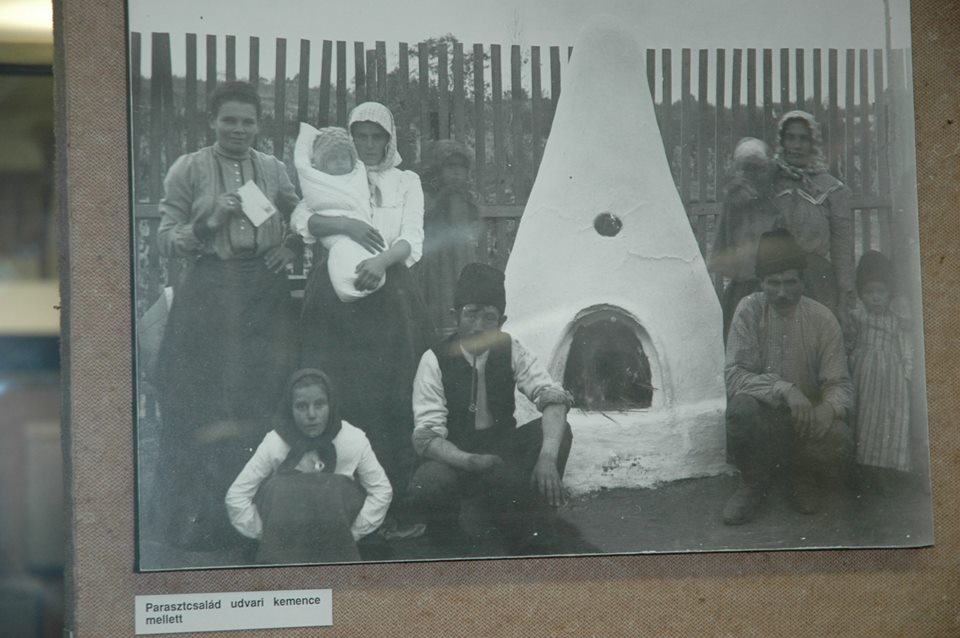
The number of Kuns is not known (in Hungary, the ethnic composition of the population is traditionally counted by censuses on the basis of mother tongue); I. Torma believes that «approximately one-fifteenth of the 16 million Hungarian people can be considered descendants of the Kuna Polovtsians» (Torma, 1995, p. 59). His methodology for calculating the number of Kuns is unknown; the number of Hungarians is considerably overestimated (according to the 2001-2002 censuses, there were 11,926 thousand Hungarians in European countries, including 9413 thousand in Hungary, 1432 thousand in Romania and 520.5 thousand in Slovakia).
History. The first of the new migrants (Kumans, Sárs/Polovcians, Kuns and Kai) that the Hungarians «met» were the Kuns, whose ethnonym became in Hungary the name of all the nomadic Turkic tribes that followed them into Hungary. Their first raid on the Hungarian kingdom dates back to 1070, in 1087 the Kuns (Kumans of Byzantine sources) as part of the troops of the Hungarian king Szolomon take part in the campaign against Byzantium (Knyazky, 2000, p.121). Since 1091 the first groups of them settled in Hungary and further separate tribal associations of nomads continue with the permission of kings to settle in such a fertile country for nomadic life.
In 1239, at the invitation of King Béla IV, Khan Kotyan (Koten, Kuten), known in many countries, including Russia, arrives and is solemnly welcomed by the king himself. But, having quarreled with Hungarian magnates, the khan was killed by them in Pest, and his people went to Bulgaria, where the Cuman dynasty of Aseni origin ruled at that time. In 1241 the Mongol invasion fell on Hungary, the country was ravaged and occupied, during which the population of the kingdom (2 million people) was halved. The Hungarian Cumans/Kuns were particularly affected: since the admission of the horde of Kotyan, whom the Mongol khan considered his vassal, into the kingdom became the reason for the Mongols’ campaign against Hungary, although Kotyan himself died and his men left the country, the Cumans/Kuns were considered guilty of war by both Mongols and Hungarians. By the time the Mongols left Hungary (1242), there were no Kuns left. The country was depopulated. Therefore, when new migrants from the east appeared, the king gladly accepted them. The tribes arrived in Hungary: six Cuman (Kuns) and one Alanian (Yasi) led by two khans — Uzur (probably Uzun, Uzun, Turkic for «Long») and Alpar (Alp — «hero», er, ar — «husband», Alpar) Tolok (obviously Tolyk, i.e. Tolyk — «Full»).y_f93e1223.
The exact date of the arrival of this numerous horde (about 80 thousand people) is unknown, but already from 1246 units of aliens take part in the campaigns of Hungarian kings. In 1254, apparently to strengthen the alliance, King Bela IV married his son (future King Istvan V) to the daughter of one of the khans (baptized Erzsébet), and in 1260 Istvan received the title of «Lord of the Kuns», in 1272 his son Laszlo IV Kun came to the throne. All this time, the Kuns continue to lead a normal life, speak their own language, keep their own beliefs — the king probably did not care much, until the news that in the Catholic country are roaming crowds of pagans, did not reach Rome. And in 1279, Bishop Philip de Fermo arrived in Hungary from Rome with the Pope’s decree about the «Kumans».

This decree, divided into 14 articles, contained the following requirements: to forbid shaving beards and heads, as well as to wear high felt «Kun» hats, to settle Kuns in separate regions, limiting the size of their nomadic movements in order to force them to settle down, and most importantly — to carry out baptism as soon as possible. In fulfillment of the requirements of the pope was issued «Manifesto» Laszlo IV Kun, «king of Hungary, Kumania and Bulgaria» from 1279 with appropriate instructions. Inquisitors» were sent to the Kuna tribes and their subdivisions to monitor the execution; the Kuna nobility was equated to the nobility and received land plots on which the nobleman’s tribesmen could live (Murgulia, Shusharin, 1998, pp. 176-180). The rigid execution of the «Manifesto» caused an uprising in 1280, as a result of its suppression from 65-85 thousand Kuns remained 50-60 thousand, the rest either died or fled in 1282 to Nogai, to Transnistria, to Dobruja, where the Kuman principality of Balika appeared (1280-1400). The Royal Manifesto of 1279 made the Kuns the legal inhabitants of the kingdom: their nobility was included in the Hungarian nobility, receiving the corresponding rights and duties, while the warriors were included in the Hungarian army no longer as a hired squad, but as a detachment of the feudal lord — the king’s vassal. Warriors were also equated with the «nobility», i.e. the nobility. However, until 1290, they did not receive a salary from the royal treasury, contenting themselves with the spoils of campaigns.V2pb-mcjExA
The Kuns converted to Catholicism and settled in separate groups between the rivers Danube-Tisa, Tisa-Keresh, and Tisa-Temesh. However, until the middle of the XV century, the Kuns continued to nomadize, spoke their own language until the XVII century (a prayer book in the Kun language dates back to the XVI century) and kept the traditions of cattle breeding. The Turkish occupation of most of Hungary (1541-1699) caused severe damage to the Kuns, in particular, the Kun area between the Tisza and the Danube (Kiskunság) was depopulated, and the number of inhabitants in other areas decreased. After the Turks left, Kiskunshag, which apparently received this name at that time, began to be settled by Kuns from Nagykunshag and Yasses from Yasshag. Kuns and Yasses played a great role in the formation of hussar regiments, the main part of which was made up by them. That is why the Kuns and Yasses were granted autonomy (1747-1867), which allowed them to preserve their traditional culture.
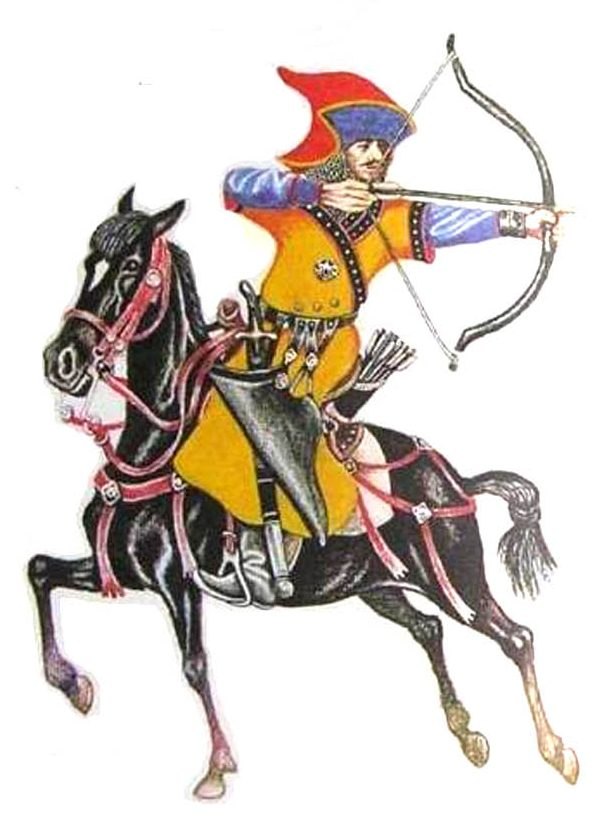
The traditional dress of men was preserved for a very long time: a high felt hat with a feather of a bustard or a crane («kunshuvek», i.e. kun hat), a blue shirt and wide pants; in winter time they wore a sleeveless sheepskin coat (bunda). The medieval dress of the Kuns is illustrated in the miniature «Arrival of various clans» in the Hungarian «Illustrated Chronicle» (1358), which depicts their arrival in Hungary in the 13th century (appendix). A characteristic feature of the cut of the Cumans’ caftan was the flush-flap halves (as depicted on the relief from Kubachi and on stone sculptures in the Northern Black Sea region), while the other Turks had the halves rolled up on the left side (as depicted in the miniature of the «Illustrated Chronicle»), and the Mongols — on the right side. Men shaved their heads, leaving a strand of hair braided at the back of the head. Beards were more often shaved, leaving a mustache. On the head wore hats with triangular margins and a high, slightly curved back tulle. On their feet they wore narrow high boots with soft soles (Dode, 2009, p. 393, see photos in the appendix).
Less is known about women’s clothing. In general it was close to men’s clothing, differing only in details. But in the above miniature of the Hungarian chronicle, the clothing of the women sitting on horses behind the men was (the woman in the foreground) a long dress with the hollow part of the garment wrapped to the left (like that of the man sitting in front of her) and with long sleeves with slits at elbow level for the arms. Wide-brimmed hats can be seen on the heads of her and the woman to her right. Over time, partly in fulfillment of a royal «Manifesto», the coiffure and dress of the Kuns changed, but certain elements, such as the predominance of moustaches and the wearing of a particular cut of hat, persisted for several centuries. However, time, dispersed settlement intensified and accelerated the assimilation process.
The tribal composition of the Kuns is not clear. Although in the Hungarian «Illustrated Chronicle» (1358. ) the following tribes were named: Borchol (Burcevici of Russian chronicles), Chertan (Djur-san in the work ad Dimashki), Kuman (as a special tribe, not a generalized name of all the tribes that came), Tortul and Toksoba (Tertjtrobici and Toksobici of Russian chronicles), as well as Bayandur, a tribe known as part of the Kimaks (Kumekov, 1995, pp. 72-75), but the time of their arrival and places of settlement are not known. These ethnonyms are well known in the list of tribes of Desht-i Kipchak. The Kuns proper are absent in the composition of these tribes, although in the sources they all appear under the name of Kuns. This fact indicates: 1) all tribes of aliens from the Northern Black Sea coast, who settled in Hungary in the XII-XIII centuries, were called Kuns, 2) originally the ethnonym «Kuns» was not a self-name of these tribes or their immediate descendants, but became it later, as they consolidated into a single ethnic community. However, it is difficult to say whether the tribal division disappeared in the process of formation of the Kuna ethnos and only then, later this ethnos was assimilated by the Hungarians, or whether the unified Kuna ethnos never formed, which means that the tribes, each separately, were assimilated.
Hungarian Kun ornaments
Economy. Up to the XVIII century in the economy of the Kuns the predominance of animal husbandry was preserved, although with the transition to settled life it ceased to be nomadic. The Kuns, as before, bred horses, sheep of a special (Kun) breed (with white wool and screw-shaped horns), cattle (not so large in size and weight, but with large horns) of the so-called silver breed and donkeys. Herders had different names: horses were herded by chikoshi, sheep by yuhas, and cows by guiyashi. Herds were not only guarded, but also herded together with shepherds by dogs of different breeds, depending on the composition of the herd, of which the «Commander» breed is considered to be very ancient. The name of the breed has nothing to do with a military term, but goes back to the Cuman word: «komandar or kumandar», i.e. komans, kumans. In the XIX century, agriculture (grain crops, horticulture, gardening) began to dominate in the economy of the Kuns, but even nowadays the Kuns have more livestock breeding than the Hungarians proper: it is not accidental that 80% of cattle-breeding terms are from the Kun language. But the ratio of livestock species in the herd has changed — less horses, more cattle. Poultry farming has been greatly developed.
Dwelling. The traditional type of Kuna settlements is a hut (tanya), usually named after the founder. The house was built of improvised material, a hen house and a room for cattle were adjoined to it, all buildings were covered with a roof of reeds. In the yard there was a well — a crane. The interior of the house: from the entrance side the first room was a living room, small in size but richly furnished; the second room was larger but poorer furnished; between the rooms there was a kitchen with a two-part stove (one part for baking bread, the other for cooking). The house was often adjoined by outbuildings of the owner’s married sons.
The food was (and still is) typical for a cattle breeder: meat, including horse meat, and dairy products. The national dish is baitarvate: boiled meat with fried potatoes and sweet cabbage.
Religion. The Kuns accepted Christianity in the form of Catholicism, but when the Reformation took place in the country (1534) they, obviously remembering how their ancestors were baptized into Catholicism, unanimously accepted it in the form of Calvinism. By the way, in all major settlements of Nagykunság, in Kartság, for example, there is a street of Janos (Jean) Calvin. The center of Calvinism in Nagykunshag is the town of Mesotur.
Finally, evidence of the historical connection with the medieval Kulovtsy are the surnames characteristic of the Kuns: Arog, Kösemöş, Koczkor, Kuvandok, Tekeş, Chereg in Kartsag, Bolmas, Butak, Karason, Cikmash, Tekeş, Erk in Kunmaradash, Akbura, Artok, Bura, Talmas in other places (Torma, 1995, pp. 36-37).
The fate of the Cumans, who roamed in the Middle Ages on the territory of modern Romania, is unknown. It is only known that in 1217 the sources mention the country of Cumania, which occupied the territory between the rivers Danube in the south and east, Olt in the west, Seret in the northeast and the city of Brasov in the north. Already then there were many Cumans in this territory (it was necessary to organize a separate bishopric for their baptism), and in 1226 new nomads arrived in Cumania, apparently fleeing after the Mongols defeated the Russian-Polovtsian groups at Kalka (1223). In 1227 in Kumania Khan Borts with his people was baptized, in 1231 — mass baptism of Kumans. In 1227 in the message of the Pope to the bishop of Esztergom it is reported about the baptism of 15 thousand Kumans in Transylvania, which is a part of the Hungarian kingdom. The history of Cumania has not been studied at all. This country of the Cumans was the domain of the Hungarian king and from 1238 it was part of the titulature of the Hungarian kings. From 1234 Cumania was intensively settled by Wallachians, Hungarians and Germans (Shusharin, 1978, no. 2). The formation of the Principality of Wallachia (1324-1330) probably questioned the existence of Cumania — in any case, from 1390 the title «King of Cumania» disappeared from the titulature of Hungarian kings. In Transylvania, the Cumans/Cowboys apparently merged completely with the Hungarians (among them the surnames Kun are sometimes found) and Romanians; there is no data on the existence of any ethnic group related to them in origin.
Literature: Evstigneev Yu.A. Hungarian Polovtsians // Lavrov Readings. St. Petersburg, 2009; Kaloev B.A. Trip to the Hungarian Kuns // Field Studies of IE&A RAS. New Series. Volume 1, Issue 1, M., 1993; Kumekov B. To Kypchak-Magyar ethnic ties // Culture of nomads at the turn of the century (XIX-XX, XX-XXI centuries): problems of genesis and transformation. Almaty, 1995; Torma I. Kun linguistic substratum in Hungarian dialects // Nomadic culture at the turn of the century (XIX-XX, XX-XXI centuries): problems of genesis and transformation. Almaty, 1995: Barta Y. Ethnographic research in Nagykunszag. Kartság, 2007 (in Hungarian).
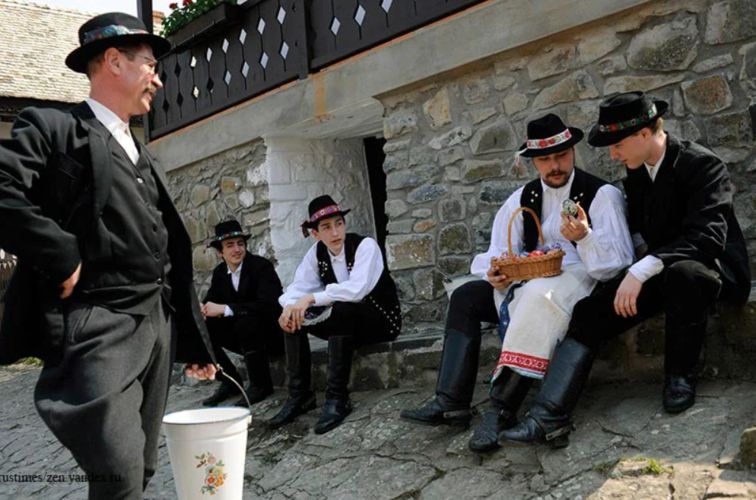
In addition to the Kuns, Hungary has another ethnic group, Turkic in origin — the Palotsi (Palotsok). The Palotsi inhabit the mountainous area (Matra) between the towns of Balašszagyarmat and Szalgotaryan in the Nograd (Palotszag) megye in northern Hungary and in neighboring areas of Slovakia. Their ethnonym is a somewhat distorted Hungarian pronunciation of a term derived from the Old Russian «Polovtsy». However, the Palotsi speak their own, very archaic, dialect of the Hungarian language, and this fact does not allow to consider them descendants of the Kipchaks, as the descendants of the Kipchak migrants (Kuns) perceived another (not ancient, but so-called middle) Hungarian language. So Palotsi are the descendants of Turkic tribes that came to Hungary before the Kipchaks, namely, according to Hungarian researchers, the Kabars. Kabars — three tribes (Kovar, Kazar and Berzel) of the Khazar Kaganate; having rebelled (810-820) against the Kagan and defeated, they joined the Magyars (mentioned in the Magyar tribes in 854-881) and together with them settled on the Danube, one of them settled after the defeat of Great Moravia (902-906) among the Slavs (Erdely, 1983, № 4). According to a Russian researcher, the Kabars were Savirs who were subjugated by the Khazars and rebelled against them (Semenov, 2008, Vostok, No. 3). However, the Byzantine Emperor Constantine Porphyrogenitus (905-959) in his work reports that the Kabars «speak the language of the Khazars and the language of the Turks» (as he called the Hungarians), i.e. the Kabars are Khazars, at least according to the language they still spoke in the X century. In 1099 the army of King Koloman (Kalman) defeated the Russian-Polovtsy detachment that raided Hungary, the captured Polovtsy and some part of Rusyns (the self-name of the population of Russia) were settled on the territory of the Kabars already assimilated by Hungarians. Captured Kipchaks quickly merged with the local population, giving them their ethnonym, but in the Old Russian name — «Kipchaks», changed in Hungarian into «palotsi». But this is only an assumption that explains the presence of such a «speaking» ethnonym of an ethnic group that did not correspond to its origin. There is no final, generally accepted solution to the question of the origin of the Palots.
Anthropologically, the Palots do not differ from the bulk of Hungarians, at least there is no data about it in Russian-language literature.
The language is a Palotsi dialect of Hungarian, characterized by archaic character (linguists historically divide the Hungarian language into Old Hungarian, Middle Hungarian and New Hungarian).

In terms of economy Palotsi do not differ from neighboring Hungarians and Slovaks. They profess Catholicism.
During the reign of King Matyasz Hunyadi (1458-1490), a part of the Palotsi were resettled in the vicinity of the town of Mezőkövesd, where the ethnographic group «Mátyo» (from the name Matyasz) was formed. Girls and women of this group are famous for their colorful traditional costumes and needlework (lace). Mateyo are spoken in the Palotse dialect.
The following surnames are very characteristic of the Palotsei and Matyos (Matyos): Bartok, Bertok, Bartek, Mattiok, Matyo, Matyi.
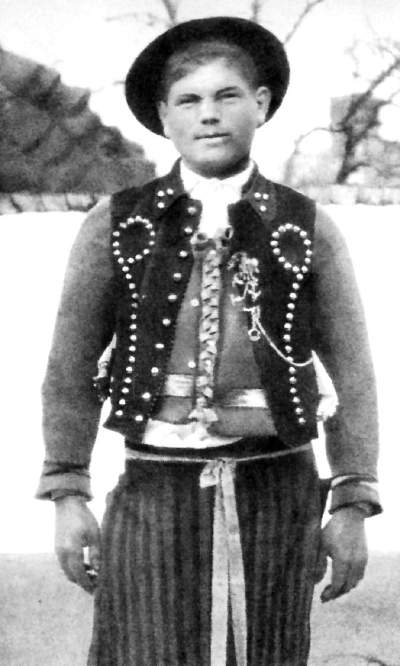
Playing an important role in medieval Bulgaria, the Kumans/Polovtsi were assimilated over time by the Bulgarians and Gagauz. Their stay in Bulgaria is evidenced by the names of settlements, such as the villages of Koman and Kotyan on the left bank of the Danube near the town of Nikopol, the village of Kumantsi near Sofia, Kumane, an island on the Danube near the town of Vidin and others.
